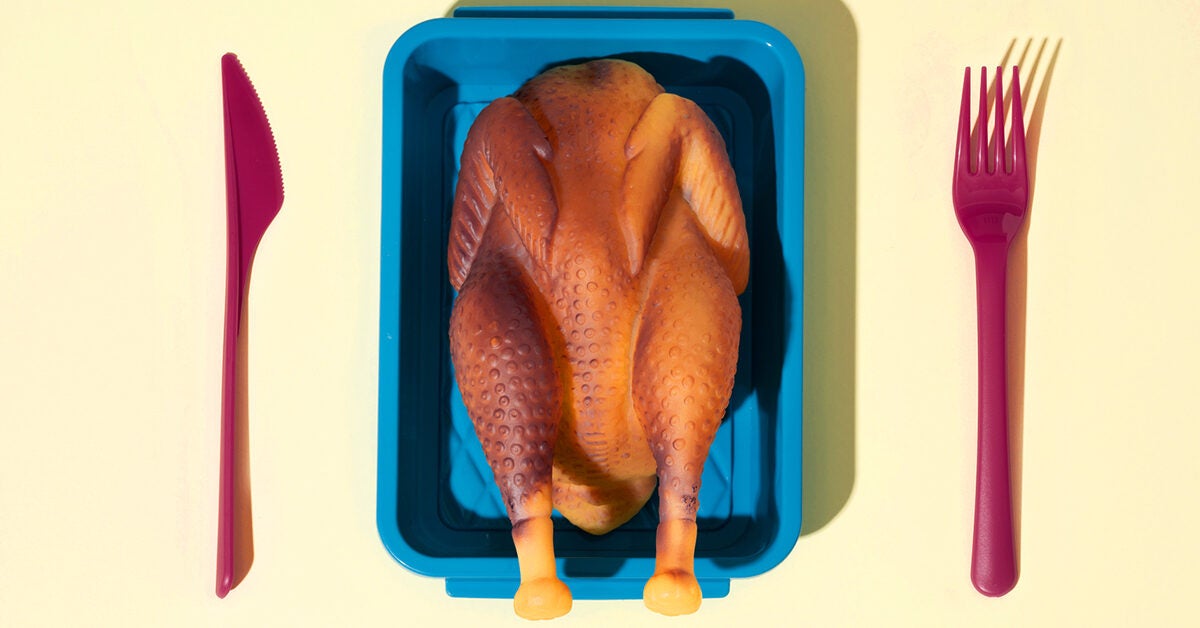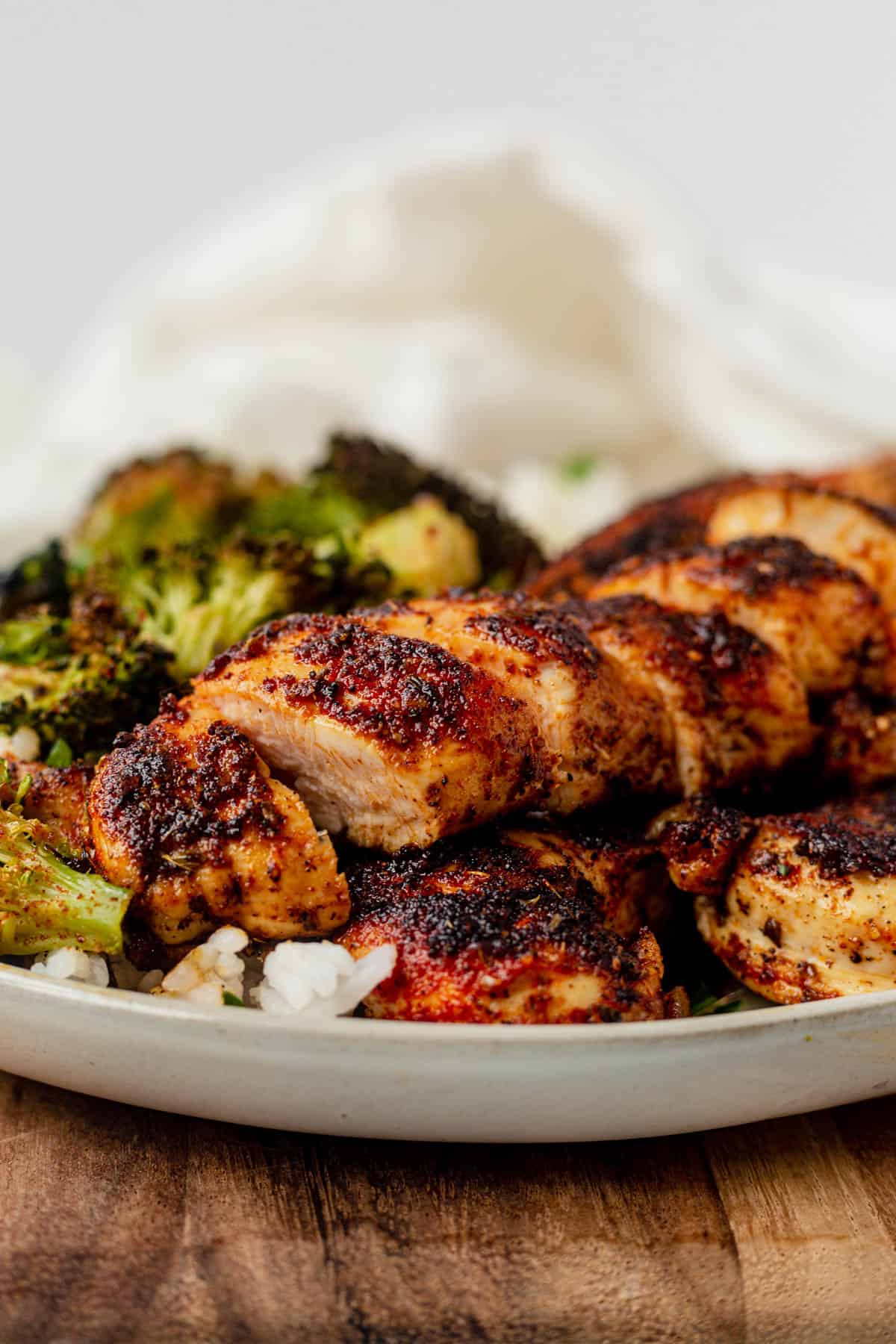You followed the recipe perfectly, but you still end up with tough, rubbery chicken. There are three reasons why your chicken may be rubbery. Have no fear, we’re sharing a few simple ways to prevent and fix rubbery chicken.
There is nothing worse than spending time, money, and energy on a recipe only to have the chicken be rubbery at the end. Chicken is one of the most common protein choices because of its versatility and nutritional value. It’s easy to throw in an Instant Pot Chicken Noodle Soup or shred it in Healthy Chicken Enchiladas.
Rubbery chicken is usually an indicator of overcooked chicken. The longer the chicken cooks, the more moisture it loses, and without moisture, the protein fibers become elastic, AKA rubbery.
Don’t Overcook Yes, you can overcook chicken even when poaching it. It takes a while, but it can happen. Overcooked chicken is dry, shrinks in size, and becomes rubbery or chewy. This happens when chicken is cooked beyond an internal temperature of 165 F.

3 Reasons for Rubbery Chicken
As mentioned above, overcooked chicken is the most common reason for rubbery chicken because the chicken loses moisture as it cooks. Checking the internal temperature of the chicken is the best way to avoid this. Keep reading for a few tried and true strategies and cooking methods.
The opposite end of the spectrum can also cause rubbery chicken. Undercooked chicken usually has a shiny appearance and a jiggly consistency. This is unsafe to eat and should be fixed before eating.
Slow-growing and organic chicken are ideal when it comes to quality. Woody chicken breasts and chicken with white striping are two types of chicken that are generally known to result in rubbery chicken regardless of the cooking process.
White striped chicken: this is a chicken breast that contains white stripes of fat along the muscle fibers. This can happen to chicken breasts, chicken thighs, and other tender pieces.
Woody breasts: woody breasts occur when the muscle fibers are knotted. The increased connective tissue and bulging muscle make them harder and chewier to eat.
A 2019 study found a significant correlation between woody breasts and the chicken’s body weight. As a result of the study, scientists believe the increased growth rate of chickens may be the cause of both white-striped and woody breasts.

Can you Eat Rubbery Chicken?
It’s generally safe to eat woody breasts, white-striped breasts and overcooked chicken, however, it won’t be as pleasant of an eating experience. On the other hand, it is not safe to eat undercooked or raw chicken.
Rubbery chicken due to undercooking can result in food poisoning and is a health risk in addition to the unappetizing texture issue. Use a meat thermometer inserted in the thickest part of the chicken to ensure it’s cooked to a safe 165°F to avoid a health hazard.
Why you should (almost) always brine your chicken
FAQ
How do you fix rubbery chicken?
What causes chicken to have a rubbery texture?
What causes rubbery chewy chicken?
Why is my chicken rubbery?
There’s more than one reason your chicken might turn out like this. Either you’ve done something wrong in the preparation or cooking process, or it’s the chicken itself that has suffered from a disease called woody chicken breast, meaning its muscle fibers are unnaturally knotted. So, in some cases, rubbery chicken is unfortunately inevitable.
How does one contract chicken pox?
Chickenpox, also known as varicella, is a highly contagious viral infection caused by the varicella-zoster virus. The virus spreads through direct contact with fluid from the blisters of an infected person, as well as through airborne transmission when an infected person coughs or sneezes. People who have never had chickenpox or have not been vaccinated against the virus are at risk of contracting it. It is most common in children, but adults can also get infected. Once a person is infected, the virus remains dormant in their nervous system, and can later reactivate and cause shingles. Symptoms of chickenpox include a blister-like rash, fever, fatigue, and itching. It is important to practice good hygiene, such as frequent hand washing, and avoid contact with infected individuals to reduce the risk of contracting chickenpox. Vaccination is also an effective way to prevent the infection.
Why is my Grilled chicken dry & rubbery?
Still, overcooking and undercooking chicken are arguably more common problems in grilling than in any other method of cooking, often leaving grilled chicken dry and/or rubbery. Regulating heat in a grill, even a gas grill, and especially in charcoal grill is more challenging than cooking on a stove burner or in a kitchen oven. The solution?
Why are my chicken breasts chewy and rubbery?
Woody chicken breasts mean that the muscle fibers of chicken breasts are knotted which makes them chewy and rubbery when cooked. So, who are we to blame for these two phenomena? Scientists believe that the culprit is the increased growth rate of chickens, but this is the topic for another day (read: another article).
